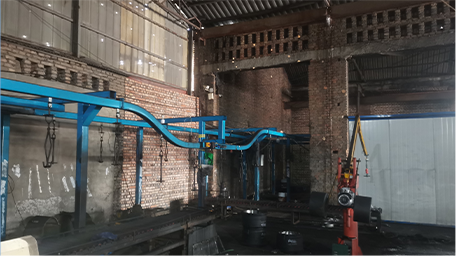Nov . 09, 2024 16:06 Back to list
Guide to Inspecting Brake Drums for Safety and Performance Evaluation
Brake Drum Inspection Ensuring Safety and Performance
When it comes to the safety and performance of vehicles, the brake system is among the most critical components. One of the key elements of the braking system is the brake drum, and regular inspection of this component is essential to ensure optimal performance and safety on the road. In this article, we will explore the importance of brake drum inspection, the signs of wear, the inspection process, and maintenance tips for vehicle owners.
Understanding Brake Drums
Brake drums are cylindrical components of the drum brake system found primarily in older vehicles and commercial trucks. They work in conjunction with brake shoes, which press against the inner surface of the drum to create friction and slow the vehicle. Though disc brakes have become more common in modern vehicles, drum brakes are still prevalent due to their cost-effectiveness and reliability, particularly in heavier vehicles.
The Importance of Regular Inspection
Brake drums are subject to significant wear and tear over time due to the heat generated during braking, exposure to road debris, and environmental conditions. Regular inspection is crucial because
1. Safety Matters Worn brake drums can lead to decreased braking efficiency, increasing stopping distances and jeopardizing safety.
2. Preventing Damage Inspecting brake drums can help identify issues before they escalate. A small crack or excessive wear detected early can prevent more serious damages to the braking system, leading to costly repairs.
3. Enhancing Performance Well-maintained brake drums contribute to smoother braking performance, which can enhance driver confidence and comfort.
4. Compliance with Regulations For commercial vehicles, adhering to maintenance and inspection schedules is often mandated by law, making drum inspections not just a safety concern but a regulatory requirement.
Signs of Worn Brake Drums
Vehicle owners should be alert to several signs that indicate the need for brake drum inspection
- Unusual Noises Squealing, grinding, or thumping sounds when applying the brakes can point to worn brake components, including the brake drum.
- Vibration or Pulsation If the brake pedal vibrates or pulsates when braking, this could indicate that the drum is warped or unevenly worn.
- Reduced Braking Power If you notice a longer stopping distance or feel a decrease in braking effectiveness, it’s time to have the brake drums inspected
.brake drum inspection

- Visual Cracks or Damage Regular visual inspections can reveal cracks, grooves, or other signs of physical damage to the brake drum.
The Inspection Process
A thorough brake drum inspection involves several key steps
1. Visual Inspection Begin with a visual examination of the brake drums for cracks, surface irregularities, or signs of excessive wear.
2. Measuring Specifications Use a micrometer to measure the inside diameter of the drum. This ensures that the drum is still within manufacturer specifications, as excessive wear can lead to failure.
3. Checking for Warping Inspect the drum for warping by placing it on a lathe or using a runout gauge to check for unevenness.
4. Assessing Brake Shoes While inspecting the drum, also check the brake shoes for wear, as they often need replacement at the same time as the drum.
5. Evaluating Hardware Inspect accompanying hardware, such as clips and springs, for wear or malfunction that may affect braking performance.
Maintenance Tips for Vehicle Owners
To keep brake drums in optimal condition, vehicle owners should consider these maintenance tips
- Regular Inspections Schedule routine brake inspections as part of your vehicle’s maintenance schedule, ideally every 12,000 to 15,000 miles.
- Timely Repairs Address any signs of brake wear immediately by consulting a qualified mechanic to prevent further damage.
- Driving Habits Practice smooth driving and avoid sudden stops to minimize wear on brake components.
- Environment Awareness Be mindful of driving in harsh weather conditions or poorly maintained roads, which can exacerbate brake wear.
In conclusion, regular brake drum inspection is vital for maintaining safe and efficient vehicle performance. By being proactive and attentive to the signs of wear, vehicle owners can ensure their brakes function optimally and maintain their safety on the road. Regular maintenance not only extends the life of brake components but also contributes to overall driving safety.
-
Liza Brake Drum: Superior Quality & Performance for Safe Driving
NewsAug.24,2025
-
Iveco Brake Drum | Premium OE Quality for Daily & Eurocargo
NewsAug.22,2025
-
Your Brake Drum Man: Quality & Performance Parts
NewsAug.21,2025
-
Explore Japan: Ultimate Travel Guide & Authentic Experiences
NewsAug.19,2025
-
Your Brake Drum Man: Premium & Reliable Brake Drums for Sale
NewsAug.18,2025
-
ROR Web Development: Build Fast, Scalable, Secure Apps
NewsAug.17,2025
